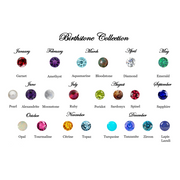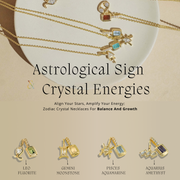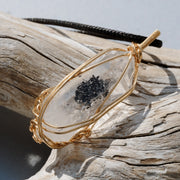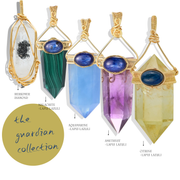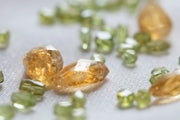Tourmaline History
Ancient Origins
Tourmaline is a gemstone celebrated for its wide spectrum of colors and powerful energy. The name “Tourmaline” comes from the Sinhalese word toramalli, meaning “mixed gems,” reflecting its natural variety of hues. Ancient traders often confused tourmaline with other gemstones, such as rubies and emeralds, because of its dazzling color range. Tourmaline has been known since ancient times in Sri Lanka, Egypt, and India, but it wasn’t scientifically recognized as a distinct mineral until the 18th century.

Cultural Significance
Throughout history, Tourmaline has been regarded as a stone of protection and inspiration. Ancient Egyptians believed that tourmaline acquired its colors while traveling from the Earth’s core through a rainbow—hence its nickname, “the Rainbow Gem.” In 19th-century Europe, it became popular among artists and writers who valued it for stimulating creativity and imagination. Chinese and Indian cultures used tourmaline for energy balancing and to attract good fortune and happiness.

Symbolic Uses Through History
Tourmaline’s diverse colors symbolize the richness of human experience—unity through diversity. Each hue carries unique energy: black for protection, pink for love, green for vitality, and blue for calmness. This makes tourmaline a gemstone that represents emotional depth, transformation, and balance across the mind, body, and spirit.

Table of contents

Origin
Brazil – The world’s largest source of gem-quality tourmaline, offering stunning varieties like Paraíba (electric blue-green) and pink rubellite.
Afghanistan and Pakistan – Known for producing multi-colored tourmaline crystals with striking clarity and saturation.
Africa (Mozambique, Nigeria, Madagascar) – A leading region for modern tourmaline mining, yielding vivid greens, blues, and bi-colored stones.
Feature
Chemical Formula: (Na,Ca)(Li,Mg,Al)₃Al₆(BO₃)₃Si₆O₁₈(OH)₄ — a complex borosilicate mineral with variable elements giving rise to its many colors.
Mohs Hardness: 7 to 7.5, making tourmaline durable and suitable for all jewelry types while still requiring mindful care to prevent scratches.
Color: Tourmaline is renowned for its incredible color diversity—ranging from colorless to pink, red, green, blue, yellow, and black. The hues are determined by trace elements such as iron, manganese, and lithium. Some stones even exhibit multiple colors within one crystal, known as bi-color or watermelon tourmaline.
Symbolism: Tourmaline symbolizes balance, protection, and creativity. Spiritually, it transforms negative energy into positive vibrations and harmonizes emotional, physical, and mental states.
-
Chakra:
Root Chakra (Muladhara): Grounds energy and offers protection (especially Black Tourmaline).
Heart Chakra (Anahata): Promotes compassion, healing, and self-love (particularly Pink and Green Tourmaline).
-
Zodiac:
Libra
Scorpio
Benefits
Protection and Grounding
Black Tourmaline is one of the most powerful protective stones in the mineral kingdom. It shields against negative energy, electromagnetic radiation, and psychic attacks. Its grounding energy connects the wearer to the Earth, providing a sense of safety, stability, and inner strength.
Emotional Healing
Tourmaline helps balance emotions and relieve stress. Pink Tourmaline, for example, soothes the heart and fosters love and compassion, while Green Tourmaline revitalizes the spirit and encourages courage during emotional challenges. The gem’s gentle energy restores harmony to relationships and promotes self-acceptance.
Creativity and Confidence
Known as a stone of inspiration, Tourmaline sparks creativity, originality, and confidence. It clears the mind of distractions, helping artists, writers, and innovators express their ideas freely. Its colorful energy stimulates motivation and personal empowerment, aligning with the Solar Plexus Chakra to boost self-assurance.
Physical Wellness
In crystal healing, Tourmaline is believed to improve circulation, strengthen the immune system, and detoxify the body. It’s also thought to balance hormones and support the nervous system, making it a stone of vitality and rejuvenation.
Spiritual Growth
Tourmaline acts as a bridge between the physical and spiritual worlds. It enhances intuition, supports meditation, and deepens spiritual awareness. By balancing the chakras, it helps one align with their higher purpose and maintain spiritual harmony.
Type
Black Tourmaline (Schorl)
A grounding and protective stone, Black Tourmaline absorbs negative energies and psychic interference. It promotes stability, security, and emotional resilience, making it ideal for empaths and those in high-stress environments.
Pink Tourmaline (Rubellite)
This vibrant stone embodies love, compassion, and emotional healing. It opens the Heart Chakra and helps release past pain, replacing it with self-acceptance and joy. Rubellite is often worn to attract loving relationships and inner peace.
Green Tourmaline (Verdelite)
Green Tourmaline enhances vitality, courage, and growth. It symbolizes renewal and prosperity, encouraging a positive outlook on life. Its energy resonates strongly with the heart, helping to heal emotional wounds and open the spirit to new possibilities.
Blue Tourmaline (Indicolite)
Blue Tourmaline stimulates the Throat and Third Eye Chakras, promoting clear communication and insight. It encourages honesty, spiritual awareness, and calmness during emotional or mental stress.
Watermelon Tourmaline
This unique bi-colored variety combines green and pink hues, symbolizing harmony and balance. It unites the heart’s giving and receiving energies, promoting compassion, friendship, and emotional healing.
Paraíba Tourmaline
One of the rarest and most valuable types, Paraíba Tourmaline displays neon blue to turquoise hues due to copper content. It represents inspiration, self-expression, and transformation, radiating pure joy and creativity.
Care & Maintenance
Cleaning
Clean tourmaline gently with mild soap, lukewarm water, and a soft cloth. Avoid ultrasonic or steam cleaners, as temperature changes can cause fractures.
Storage
Store tourmaline separately from harder gemstones to prevent scratches. Keep it in a soft-lined jewelry box or fabric pouch, away from prolonged sunlight that might fade certain colors.
Handling
Avoid exposure to harsh chemicals or sudden temperature shifts. Remove tourmaline jewelry before exercising, swimming, or applying lotions and perfumes to maintain its shine and color.
FAQs
Q: Is Tourmaline a birthstone?
A: Yes, tourmaline is one of the traditional birthstones for October, symbolizing balance, protection, and creativity.
Q: Why does tourmaline come in so many colors?
A: Tourmaline’s color diversity results from trace elements like iron, lithium, and manganese that influence its crystal structure during formation.
Q: Is Tourmaline good for protection?
A: Absolutely—Black Tourmaline, in particular, is famous for grounding and shielding against negative energy and electromagnetic radiation.
Q: Can Tourmaline fade in sunlight?
A: Yes, some varieties (especially pink and green) can fade with prolonged UV exposure, so store them in a cool, shaded area.
Q: What does Tourmaline symbolize spiritually?
A: Tourmaline symbolizes emotional balance, grounding, and transformation. It helps clear negativity and aligns the chakras for spiritual growth.
Final Thoughts
Tourmaline: Benefits, Properties and Meaning of the Stone capture the gemstone’s incredible diversity, healing power, and radiant beauty. With its array of colors—each resonating with unique vibrations—tourmaline embodies unity, balance, and strength. From grounding black to loving pink and electrifying blue, it connects all aspects of the human experience. Whether worn for protection, emotional healing, or creative inspiration, tourmaline remains a timeless ally that nurtures both the body and soul. It is truly a gemstone of harmony, transformation, and vibrant life energy.

